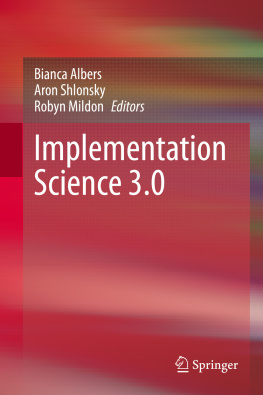Claudia Albers - Planet X The Awakening is Now
Here you can read online Claudia Albers - Planet X The Awakening is Now full text of the book (entire story) in english for free. Download pdf and epub, get meaning, cover and reviews about this ebook. year: 2017, publisher: Scott C’one, genre: Science fiction. Description of the work, (preface) as well as reviews are available. Best literature library LitArk.com created for fans of good reading and offers a wide selection of genres:
Romance novel
Science fiction
Adventure
Detective
Science
History
Home and family
Prose
Art
Politics
Computer
Non-fiction
Religion
Business
Children
Humor
Choose a favorite category and find really read worthwhile books. Enjoy immersion in the world of imagination, feel the emotions of the characters or learn something new for yourself, make an fascinating discovery.

- Book:Planet X The Awakening is Now
- Author:
- Publisher:Scott C’one
- Genre:
- Year:2017
- Rating:5 / 5
- Favourites:Add to favourites
- Your mark:
- 100
- 1
- 2
- 3
- 4
- 5
Planet X The Awakening is Now: summary, description and annotation
We offer to read an annotation, description, summary or preface (depends on what the author of the book "Planet X The Awakening is Now" wrote himself). If you haven't found the necessary information about the book — write in the comments, we will try to find it.
Planet X The Awakening is Now — read online for free the complete book (whole text) full work
Below is the text of the book, divided by pages. System saving the place of the last page read, allows you to conveniently read the book "Planet X The Awakening is Now" online for free, without having to search again every time where you left off. Put a bookmark, and you can go to the page where you finished reading at any time.
Font size:
Interval:
Bookmark:
Chapter 1
It all started with Red Sunsets
Allow me to introduce myself, my name is Dr. Claudia Albers, I am a planet x researcher, and this is my story. I was born in the small country of Mozambique, in east Africa to Portuguese parents. Life in Mozambique was peaceful and carefree, with trips to the beach, all year round. During the many trips to the beach I noticed the curved horizon, where the ocean meets the sky. I also enjoyed observing the ships coming into Port and how they seemed to get taller as they approached. I started to understand at that point that the earth was curved. I enjoyed understanding the world I lived in, and the physics behind it. I also enjoyed observing the Moon and the Sun. I would get up before sunrise every day, in order to observe the Sun appear in the sky. I did this from the time I was 5 years old. I was not like other children, as I think my mom seemed to like the dolls she bought for me, more than I did. Fortunately, my mom also thought that books were important and read me bedtime stories, ever since I can remember. When I was 6 years old, she bought me a book that had a profound impact on my life. It was a book on astronomy. I read the book over and over again, and was so fascinated with it that I decided that I wanted to be an astronomer. I still remember that the book said that if you wanted to be an astronomer, you had to study physics and mathematics at a university. When I was 9 years old, I decided that I needed a telescope, and so I got my mom to buy me the two lenses I needed, through our optometrist, who was a friend of the family. I managed to mount them and built my own telescope.
A few years later, as a 17 year old and living in South Africa, I was about to begin my first year at the university. At registration, I was asked if I wanted to major in physics or chemistry, and I, remembering that I wanted to become an astronomer, immediately responded that I wanted to major in physics. Unfortunately, though the University of the Witwatersrand, where I was enrolling, did not offer an astronomy program, so I ended up doing a PhD in Theoretical Physics. I was a very diligent student and was awarded two gold medals, in the course of my studies, for being at the top of my class. Even though I was not able to study astronomy directly, my interest in it continued and was fed by my reading countless books on cosmology in first year. In second year, I did a project that involved the astronomical observation of Saturns rings, and in my Honors year of study, I remember thoroughly enjoying a course on Cosmology and Stellar Evolution.
After my PhD graduation, I spent a few years looking after my children. My youngest child was born with cerebral palsy and she required my full attention for quite a few years. However, in the year 2000, I started my lecturing career at the same university where I had been a student. I quickly gained a passion for training future physicists, and even did a second Masters degree, this one in Science Education. My teaching career was however cut short, in 2017, because of my research into Planet X. Even though I had planned to always remain anonymous, somehow it became known who I was and where I worked, after which a certain amateur astronomer named Scott Ferguson emailed the University, where I worked, complaining about my research. I was placed under investigation and so began my time of persecution.
I ended up deciding to simply leave with whatever meager pension money I had collected up to that point in time, and start a new life in the United States whilst continuing my research into Planet X.
My research journey into the Planet X phenomenon started in June of 2016. At the time, I was living in South Africa, where the crime rate is so high that I did not feel safe taking my daily walk in the streets. Instead, I walked around the circular road in the gated community where I was living. I usually took those walks at sunset. I started noticing that the sky looked very red at sunset. The clouds above my head were very red at certain times, as the sun was going down. I had taught my first year students the theory behind the colors we observe in the sun, sky and clouds, and I knew that this was not normal. Day after day, I wondered how it was possible for clouds to look so red, when they were so far away from the setting Sun. The only explanation I could come up with was that a red light emitting object, close to the Sun, was illuminating the earths atmosphere. But how could this be even possible? At the time this explanation seemed a difficult thing to accept, so it did not lead to further investigation on my part.
Then I started noticing that the sky looked red along the horizon, at sunset, both in the west and the east. This I knew was impossible, the Sun can only be in the west, at sunset, it cannot be in the east. So if the sky looked red in the east at sunset, another star had to be close enough to the earth to illuminate the earths atmosphere, and this star had to be emitting red light. Now, this second piece of evidence I just could not ignore. At this time, I realized that something extraordinary must be happening in the Solar System.
In addition, to the two red light observations that were happening, one day as I was taking my daily walk I caught a fleeting sight of an object in the sky that was not the Sun or the Moon. It got quickly covered with clouds but I knew that I had seen something that was not supposed to be there, and at this point I decided to look on the internet and see if other people were observing the same phenomena. And thus started my own investigations, into what was going on in the Solar System.
And now, l will begin to discuss the scientific principles behind the evidence for the presence of planet X in the Solar System. By planet x, I refer to the unknown object or objects that are causing the many strange phenomena in our Solar System and on Earth. First of all, the Sun emits white light, so outside the earths atmosphere the Sun looks white to us. But inside the earths atmosphere, the Sun looks yellow. The reason for that is that the earths atmosphere scatters or removes blue light from sunlight.
Clouds are made out of tiny droplets of water, which scatter all frequencies of sunlight equally. All the frequencies of sunlight, or white light, can be divided into 3 main colors: red, green and blue. Now, if we combine green and blue we get cyan, if we combine red and blue we get magenta, and if we combine green and red, we get yellow. When all three primary colors are combined we get white light. Figure 1.1 illustrates this. Thus, since clouds scatter all frequencies of light equally, they usually look white (see figure 1.2). However, the atmosphere scatters mainly blue light, which is why the sky looks blue, most of the time, and the Sun looks pale yellow, from the surface of the Earth. When you remove blue, you are left with red and green, which combined yields yellow, as seen from figure 1.1. At sunset, the sunlight goes through more atmosphere, which then starts scattering green as well as all the blue, so the Sun looks redder, whilst the atmosphere looks pale cyan (see figure 1.3). At least, it would, if everything was normal on Earth. But things were far from normal, it also became obvious that this was one of the most closely guarded secrets in the world. In fact, towards the end of my lecturing career, I felt that I was being irradiated, so that I would suddenly feel faint whilst lecturing. I had never felt anything like this, until after it became known in the Planet X community who I was.

Figure 1.1. Combining the three different primary colors of light produces other colors, cyan from combining blue and green, yellow from combining red and green, and magenta from combining red and blue. When all 3 primary colors are combined equally, white light is produced
Next pageFont size:
Interval:
Bookmark:
Similar books «Planet X The Awakening is Now»
Look at similar books to Planet X The Awakening is Now. We have selected literature similar in name and meaning in the hope of providing readers with more options to find new, interesting, not yet read works.
Discussion, reviews of the book Planet X The Awakening is Now and just readers' own opinions. Leave your comments, write what you think about the work, its meaning or the main characters. Specify what exactly you liked and what you didn't like, and why you think so.




